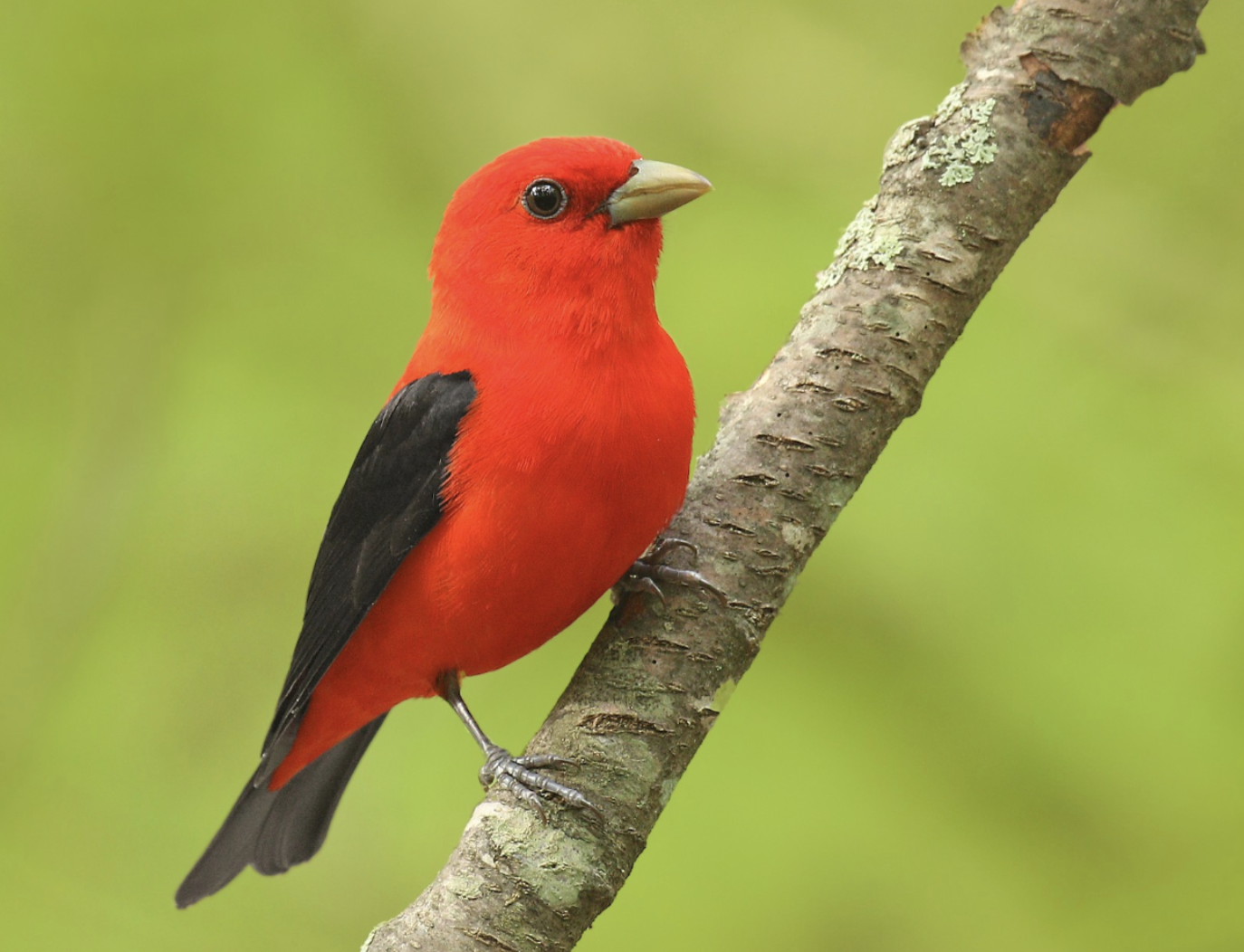McGolrick Bird Club Issue 002
Last week we claimed that bird migration was heating up at McGolrick Park.
This week? Bird migration is 🔥❤️🔥🔥!!! 🚒
It all started on May 6th’s bird walk, when bird clubber Millie noticed a brilliant red something, high in the park’s northwest canopy.
Millie found a SCARLET TANAGER:
Here’s the encounter — the moment — in which bird clubbers’ jaws are at once on the floor, and tilted uncomfortably tanager-ward:
Muse to bird photography nerds and lucky laypeople alike, the improbable, siren-red Scarlet Tanager travels from Central and South America to NE US/SE Canada, every spring, in search of breeding grounds.
I mean, that’s wild when you think about it. Just look at this map:
What seemed like a one-off bestowing of good fortune on the nascent McGolrick Bird Club by the Bird Gods, turned out to be only the beginning. Because on the following day — Sunday, May 7th — up to 5 Scarlet Tanagers could be found in McGolrick Park!
Wait, 5?
Yes, 5! And they seem to still be around. Go notice them.
(To see all the birds spotted in McGolrick Park on that wild Sunday, May 7th — click here.)
Other First of Seasons
It wasn’t just Scarlet Tanagers that turned necks in McGolrick Park this week. A number of other migrants — especially thrushes and warblers — found their way to our beloved park.
Thrushes are slightly bigger than sparrows + viewable with the naked eye, and typically found beneath bushes. What follows is a quick primer on 3 different, recently-noticed-in-McGolrick Park thrush species. (We’ll talk more about warblers in the next newsletter.)
Wood Thrush
Bold, rusty back; dark breast spots; sometimes raised head feathers.
Veery useful info here.
Swainson’s Thrush*
Drab brown, eye ring, drab brown spots. The Kevin Jonas of the trio?
More on this bird here.
*And OK there’s also a Hermit Thrush that’s very similar to the Swainson’s. It has darker spots and a red tail. Rule of threes + fewer recent Hermits explain the skip.
These birds’ differences are subtle but manageable, right?
To put your newfound thrush expertise to test, look underneath bushes by the Russell Street rocks, and in the beds near the WWI angel.
WARNING: When noticing these thrushes, be careful not to confuse them with
the larger, common-to-the-park, American Robin
the small, orange-mohawk’d, chicken-walking Ovenbirds that we mentioned last week. They’re still around, in increasing numbers!
That’s it for this week!
Let’s get zen and be punk and go birding together—and see what other birds show up!








